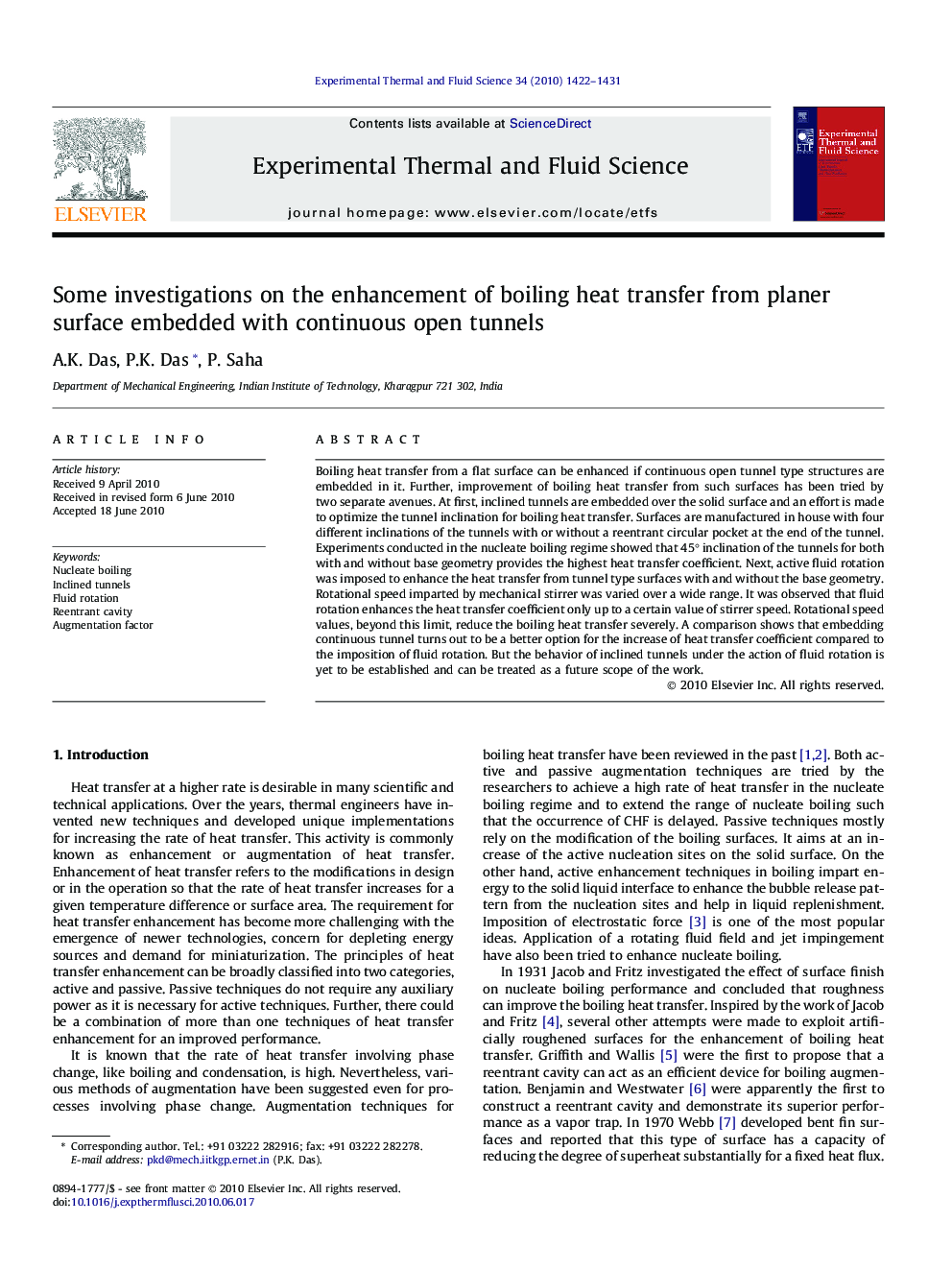| Article ID | Journal | Published Year | Pages | File Type |
|---|---|---|---|---|
| 652505 | Experimental Thermal and Fluid Science | 2010 | 10 Pages |
Boiling heat transfer from a flat surface can be enhanced if continuous open tunnel type structures are embedded in it. Further, improvement of boiling heat transfer from such surfaces has been tried by two separate avenues. At first, inclined tunnels are embedded over the solid surface and an effort is made to optimize the tunnel inclination for boiling heat transfer. Surfaces are manufactured in house with four different inclinations of the tunnels with or without a reentrant circular pocket at the end of the tunnel. Experiments conducted in the nucleate boiling regime showed that 45° inclination of the tunnels for both with and without base geometry provides the highest heat transfer coefficient. Next, active fluid rotation was imposed to enhance the heat transfer from tunnel type surfaces with and without the base geometry. Rotational speed imparted by mechanical stirrer was varied over a wide range. It was observed that fluid rotation enhances the heat transfer coefficient only up to a certain value of stirrer speed. Rotational speed values, beyond this limit, reduce the boiling heat transfer severely. A comparison shows that embedding continuous tunnel turns out to be a better option for the increase of heat transfer coefficient compared to the imposition of fluid rotation. But the behavior of inclined tunnels under the action of fluid rotation is yet to be established and can be treated as a future scope of the work.
